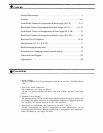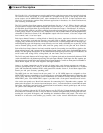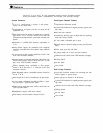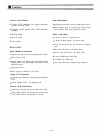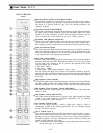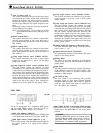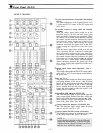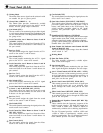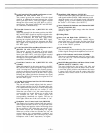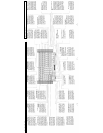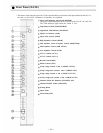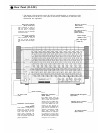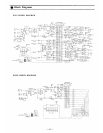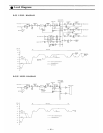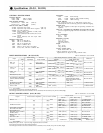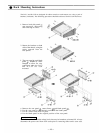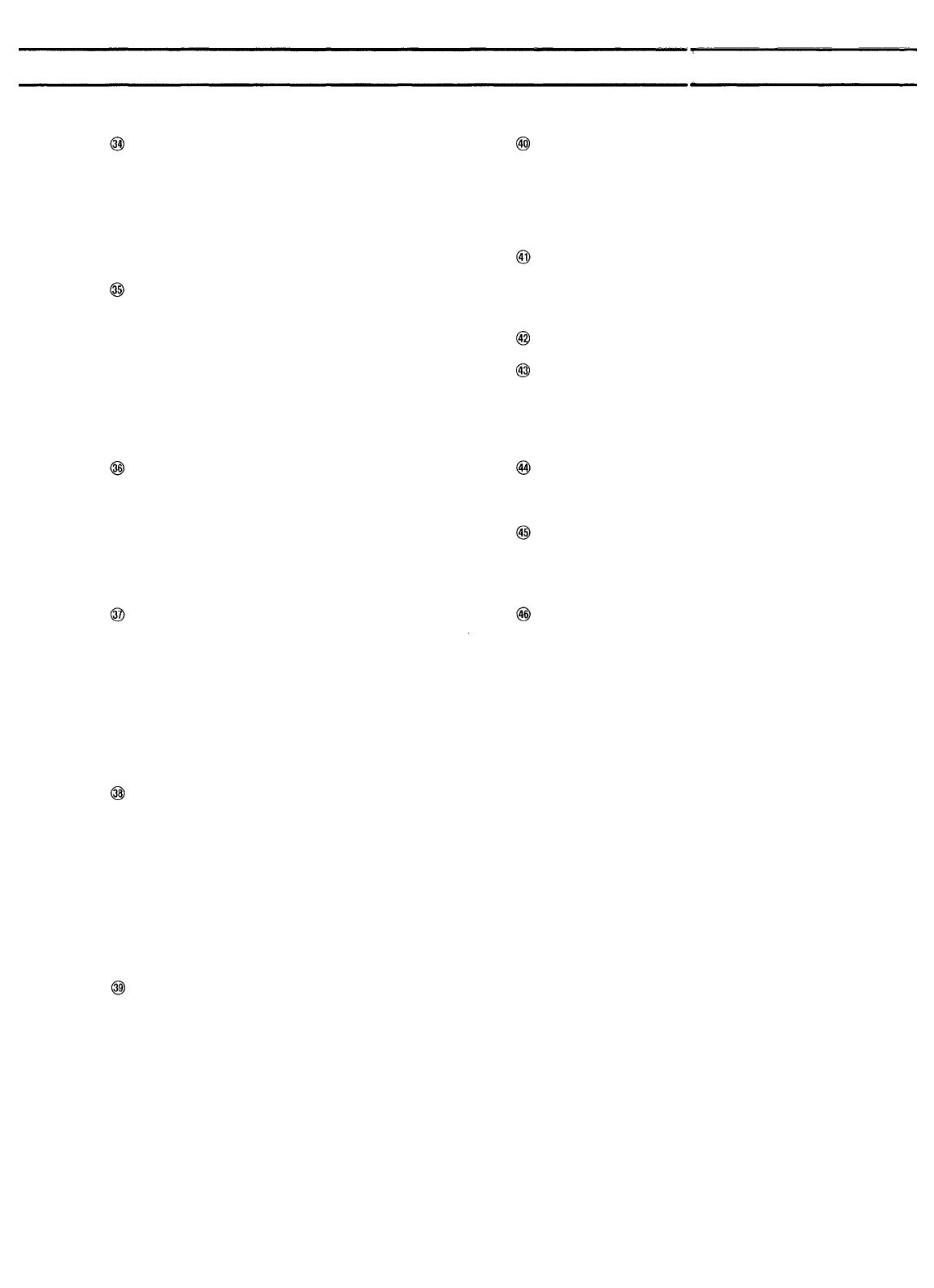
Level Control for Effect and Reverb Return to Aux 1
(REV/EFF TO AUX, LEVEL AUX 1)
This control governs the amount of reverb signal
(built-in or outboard) returned through the reverb
return jack (REV RET), and effect signal returned
through the effect return jack (EFF RET) to AUX 1
mixing buss. The signals of REV RET and EFF RET
are controlled simultaneously.
Cross-fade Control to Aux 1 (REV/EFF TO AUX,
X-FADE)
When this control is in the center position, the REV
RET and EFF RET signals are equally assigned to the
AUX 1 mixing buss. Rotating the control counter-
clockwise decreases the EFF RET signal level,
keeping the original level of the REV RET signal.
Rotating the control clockwise decreases the REV
RET signal level, keeping the original level of the
EFF RET signal.
Level Control for Effect and Reverb Return to Aux 2
(REV/EFF TO AUX, LEVEL AUX 2)
This control governs the amount of reverb signal
(built-in or outboard) returned through the reverb
return jack (REV RET), and effect signal returned
through the effect return jack (EFF RET) to AUX 2
mixing buss. The signal of REV RET and EFF RET are
controlled simultaneously.
Cross-Fade Control to Aux 2 (REV/EFF TO AUX,
X-FADE)
When the control is in the center position, the REV
RET and EFF RET signals are equally assigned to the
AUX 2 mixing buss. Rotating the control counter-
clockwise decreases the signal level of the EFF RET,
keeping the original level of the REV RET signal.
Rotating the control clockwise decreases the signal
level of the REV RET, keeping the original level of
the EFF RET signal.
Cue Out Level Control and Cue ON LED Indicator
(CUE
OUT,
CUE)
The cue out level control adjusts both the stereo L
and R signals and the Cue in (L, R) signal fed to the
Cue output on the rear panel (CUE OUT) and permits
stereo monitoring when the cue switch is "off".
When the cue switch is "on", the control adjusts the
corresponding cue signal. When two or more of the
cue switches are "on", the control adjusts the
corresponding combined cue signals. The cue on
LED lights when one of the cue switches is "on".
Headphone Level Control and Jack (PHONES)
The phones level control adjusts both the stereo L
and R signals and the Cue IN (L, R) signal fed to the
phones output and permits stereo monitoring when
the cue switch is "off". When the cue switch is "on",
the control adjusts the corresponding cue signal.
When two or more of the cue switches are "on", the
control adjusts the corresponding combined cue
signals. The headphone jack will accept any stereo
headphone with 8 ohms impedance, or higher.
Signal/Peak LED Indicator (SIG/PEAK)
The LED indicator lights green when the stereo out L
or R signals reach more than -30dB, and turns to red
when the stereo out L or R signals reach -3dB below
clipping, giving a visual reference of adjustment of
the stereo L or R faders. (See NOTE 1)
Stereo Channel ON Indicator and Channel ON/OFF
Switch (CHANNEL ON)
The LED indicator lights orange when the channel
switch is "on".
Writing Block
Stereo Left and Right Fader (STEREO L, R)
The fader provides continuously variable adjust-
ment of the stereo L or R output, and the signal level
to the Sum out channel when the sum select switch
is set in the "POST" position.
Cue Switch (CUE)
The cue switch permits monitoring the pre stereo L,
R fader signals through the headphones and cue out.
Power LED indicator and Switch (POWER)
The power switch alternately turns AC power to the
D-5.5 "on" and "off". The LED indicator lights when
the switch is "on".
Dual LED Bargraph Meter and Meter Select Switch
(METER SELECT, SUM/CUE, L/R)
The meter indicates the sum output (left side) and
cue output (right side) when the meter select switch
is set in the "push" position, and indicates the stereo
L output (left side) and stereo R output (right side)
when the meter select switch is set in the "release"
position.
— 9 —



